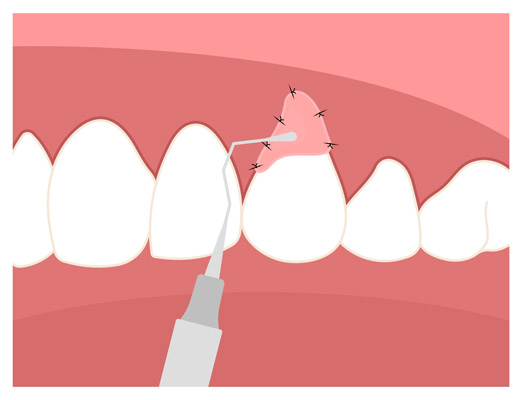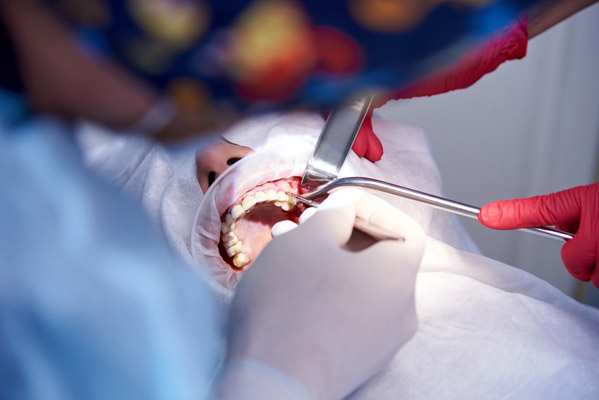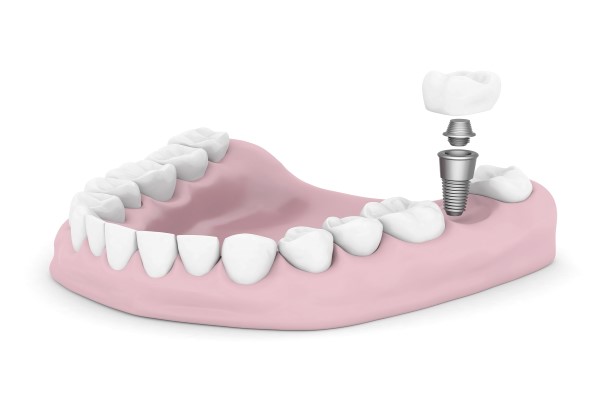Exploring Gum Grafting Techniques

Gum grafting is a dental procedure to treat gum recession, where the gum line recedes exposing more of the tooth or its root. This condition can cause sensitivity, increased decay risk, and aesthetic concerns. Gum grafting techniques restore gum tissue to its original form to correct this issue.
What is gum grafting?
Gum grafting is the addition of tissue where the gums have receded. The grafting material may be obtained from the patient's palate, from a donor, or from synthetic materials. Graft choice depends on the patient’s case and the periodontist’s preference. This procedure improves the appearance of the gums and protects the roots of the teeth from exposure.
The gum grafting process
The steps of gum grafting include:
- Preparation: First, the periodontist will clean plaque or tartar from the graft area. They will use a local anesthetic to numb the site and minimize discomfort during the procedure.
- Graft selection and placement: The graft material is selected according to the patient's specific requirements and recession level. In the case of a pedicle graft, a flap of adjacent gum tissue is partially incised and stretched over the recession site to cover the exposed root. A free gingival graft involves removing a bit of tissue from the palate and grafting it to the recession site.
- Securing the graft: The graft is placed and often retained with sutures to achieve optimal contact with adjacent tissues and integration. The site may be covered with a dressing to aid healing.
- Healing and integration: The success of the gum graft depends on the postoperative period. The periodontist will provide specific care instructions including diet and oral hygiene instructions to avoid disturbing the graft. Over the following weeks, the grafted tissue integrates with the remaining gum tissue to promote regeneration and healthy coverage over the exposed roots.
The gum grafting procedure offers a solution for gum recession and provides both oral protection from decay and a better-looking smile. The success of the procedure depends upon the careful execution of every step along with diligent post-operative care by the individual.
Gum grafting benefits
Gum grafting reduces gum recession and prevents it from progressing. It covers exposed roots, reducing the sensitivity to hot and cold temperatures and root decay risk. From an aesthetic standpoint, gum grafting can create an even, healthy gum line for the smile. It also improves oral health by providing a secure, protective cover around the teeth.
Post-operative care and recovery
Post-operative care is essential for gum graft success. Patients might experience some discomfort and swelling. The periodontist may recommend getting prescription or over-the-counter pain relievers. Dietary modifications to soft foods and good oral hygiene are recommended to speed healing. Recovery time varies but typically takes a few weeks. Patients are advised to avoid vigorous activity and follow care instructions from their dental professional.
Final thoughts
Gum grafting is used for gum recession and related problems in periodontal therapy. Knowing the procedure and benefits of gum grafting enables individuals to make informed choices regarding their dental health care to maintain healthy teeth and gums. To learn more about this treatment, contact our office today and schedule a consultation appointment.
Request an appointment here: https://www.torreyhillsperio.com or call Torrey Hills Periodontal Group at (858) 925-1188 for an appointment in our San Diego office.
Check out what others are saying about our services on Yelp: Read our Yelp reviews.
Recent Posts
An oral surgeon might recommend the sinus lift procedure if your jawbone needs to be built up so it can hold dental implants. Also known as a sinus bone graft, the treatment is used to build bone tissues in the upper jaw. Oral surgeons or periodontists typically perform the procedure. Patients need to be fully…
Many patients with missing teeth find themselves looking at implants as a solution. dental implants have become a popular tooth replacement option in recent years that offers numerous benefits for a patient's oral health. Different types of prostheses are used with implants for different severities of tooth loss.Implants are nowadays one of the most common…
A missing tooth must get a tooth replacement as soon as possible. An untreated dental gap can contribute to many dental issues. That is why a dental replacement is important. Here are the details on how a tooth replacement can improve your smile.An oral surgeon understands how tooth loss can affect a patient. A tooth…
Undergoing oral surgery can feel overwhelming, but proper post-operative care is crucial to ensure a smooth recovery. Whether you have had wisdom teeth removed, dental implants placed, or another procedure, following the right recovery steps can help minimize discomfort and prevent complications.First and foremost, the oral surgeon will provide detailed post-operative care instructions specific to…


